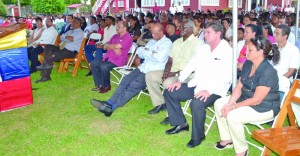The revolutionary PetroCaribe initiative that allowed signatory nations to benefit from subsidised Venezuelan fuel, and the role its architect Hugo Chávez, the late president of Venezuela played as a patron in Latin American and Caribbean integration, were among the highlights at a reflection on the life of the leftist leader Monday afternoon.
Finance Minister Dr Ashni Singh, who was one of the presenters at the Red House event, recalled being part of a delegation from Guyana that visited Venezuela as the Caracas Energy Accord, the forerunner to PetroCaribe was being conceptualised under the auspices of Chávez.




